Amherst Professors Share Stories Behind Their Office Doors
The best way to get to know your professor? Take a look at their office door. Staff writer Dohyeon Kim ’26 interviews four professors about their unique door decorations.
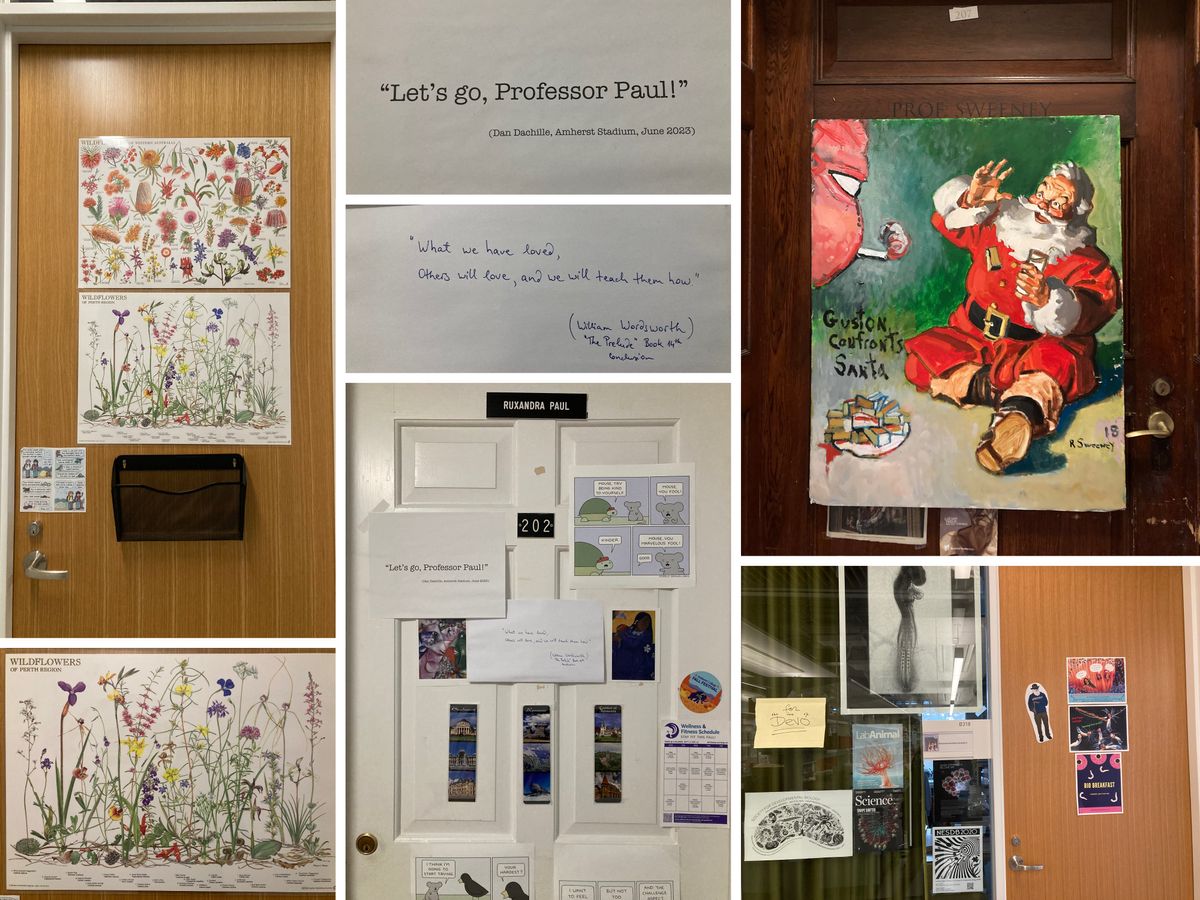
If you are a student trying to get to know your professor, you might want to start by looking at their office door. Whether it’s cartoons, posters, or quotes, the decorations professors put on their doors reflect who they are.
As I spoke with four faculty members, their unique decorations opened the door to deep conversations about their personal and scholarly lives.
Ruxandra Paul, Clark House Room 202
Assistant Professor of Political Science Ruxandra Paul has an office door that looks like patchwork, although not by deliberate choice. “It is not like I put everything at the same time,” Paul said. “It’s just accumulated over the years.”
On her door, one sheet of paper reads, “Let’s go, Professor Paul!” This is what Paul’s former student, Dan Dachille ’23, shouted to her when they ran into each other over the summer. “I was … getting my run in. Dan, who was a goalie on the men’s ice hockey team … saw me running, and he felt the need to express support,” Paul said.
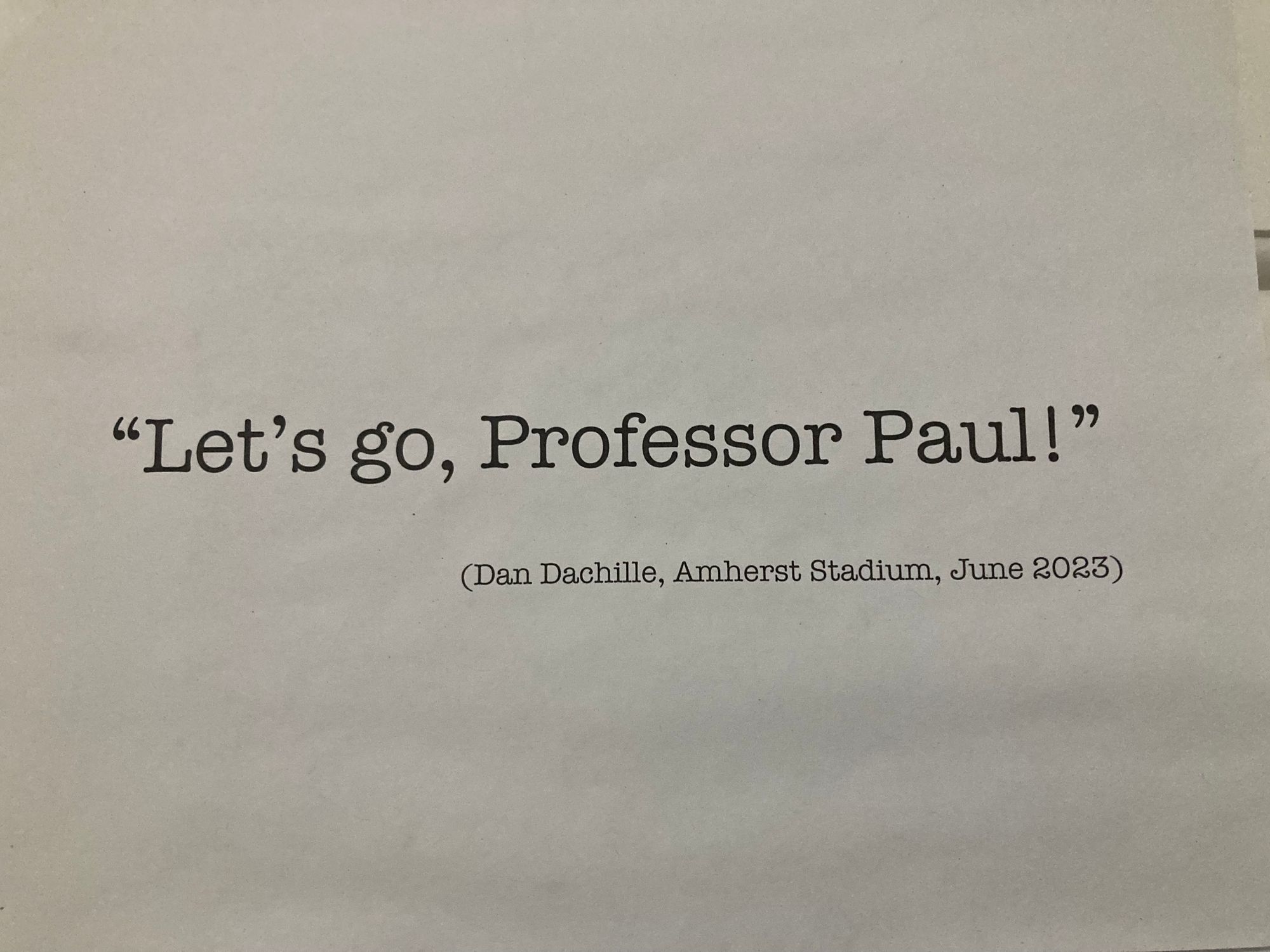
Paul derives genuine enjoyment from interacting with her students outside the classroom. “I warn my students about the fact that I exist on campus in other capacities, and I have these alter egos, and that they will intersect with them.”
Paul is a long-distance runner and a certified fitness instructor. She teaches barre classes at the Alumni Gym, which are as popular as her political science courses.
As a firm believer in staying physically active, Paul is often inspired by student-athletes like Dan. “The thing that he said to me … reminded me of the things that I’ve learned from my student athletes,” explained Paul. “Their practice and commitment and discipline, and will to keep on going and get the job done.”
Adjacent to Dan’s quote on Paul’s door, one can find the musings of English poet William Wordsworth: “What we have loved, others will love, and we will teach them how.” This is the first thing Paul put on her door when she came to Amherst in 2016.
“When I arrived into my then empty office for the first time, I remembered this quote that I heard from a professor of mine from graduate school and a mentor, Nancy Rosenblum from Harvard University,” Paul recalled.
As a young professor excited to begin her teaching career, Paul considered the quote to be the perfect definition of teaching itself. In line with Wordsworth’s sentiments, she wanted to take what she loved and teach her students how to love it. Although Paul acknowledges that is easier said than done, it is an attitude that she has managed to carry with her throughout her years at Amherst.
Paul also remembers to carry her Romanian identity with her. On her door, there are pictures of Bucharest, Romania, where she is originally from. To Paul, who came to the United States as an international student and eventually settled down as an immigrant, “the idea of going back to one’s roots, of remembering where we come from, one’s starting point and journey, has special significance.”
Robert Sweeney, Fayerweather Hall Room 207
Professor of Art Robert Sweeney’s office door decoration is simple but eye-catching. The only thing on his door is a painting entitled “Guston Confronts Santa,” a nod to Philip Guston, an iconic American artist. About seven years ago, Sweeney came up with the idea to put this painting on his door every year at Christmas time.
The painting depicts a typical Santa Claus figure found in old Coca-Cola advertisements. Along with that, there is a pink face drawn in Guston’s signature style of abstract expressionism. In Sweeney’s words, “kaboom, two worlds meet, and I thought it would be an amusing subject.” However, that is not the only reason why Sweeney chose to decorate his door with the painting.
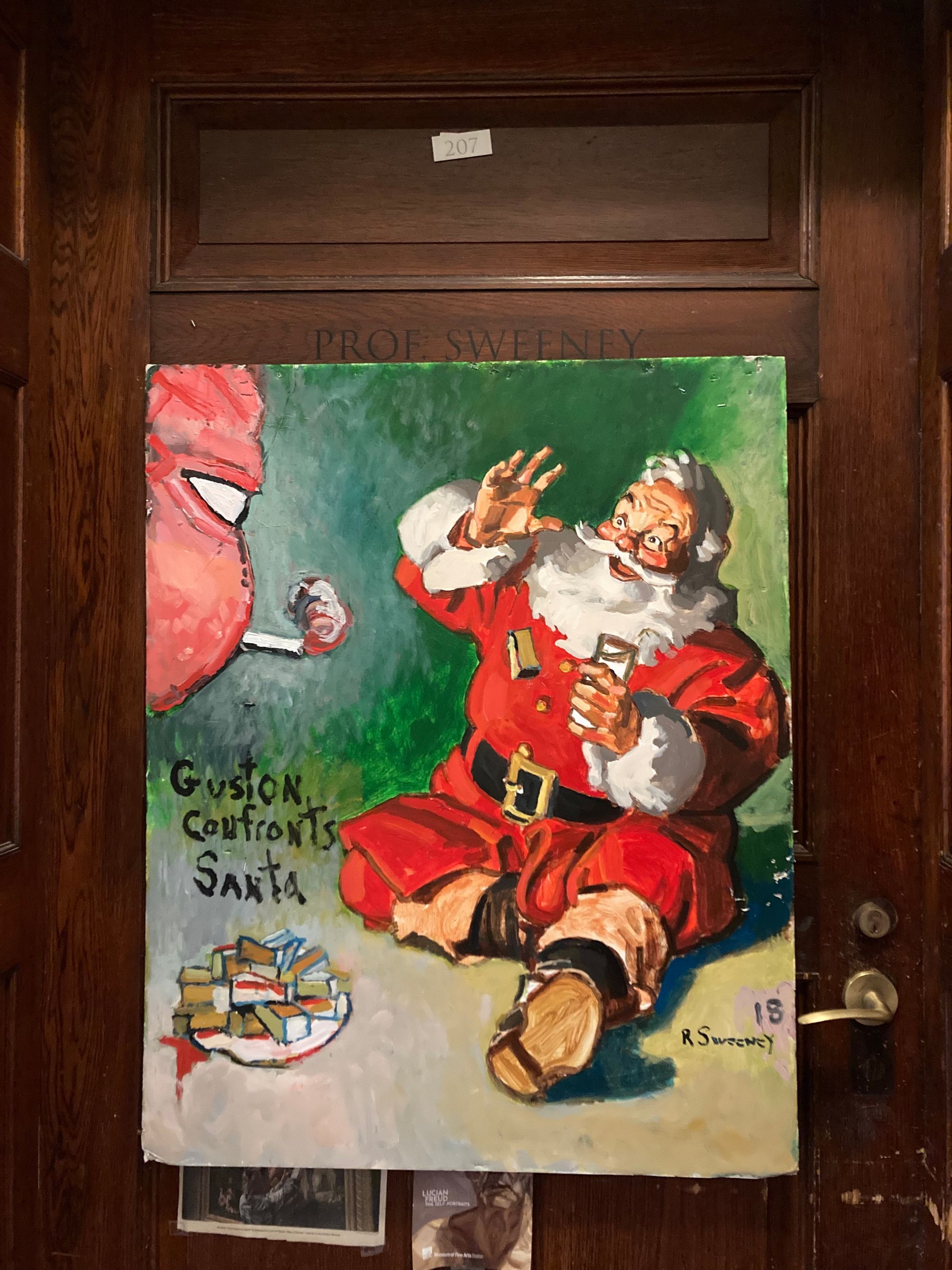
The artist was an “outstanding mentor” for Sweeney in graduate school, who made him see the transformative power of education.
When asked about his favorite memory with Guston, Sweeney brought up the day Guston critiqued one of his paintings. “The [main] figure was a woman sitting on a model stand, and to the right was a white chair. Guston looked at the painting and said, ‘I can tell that that chair you painted, you were painting it in a highly personal way.’”
Sweeney recalled, “It was extraordinary, because he was right. He read that from my painting when there was nothing that was making that chair a big deal … He was somebody who could make sense out of whatever language you were using, could read where you were coming from, and offered very sage advice as to how to continue — not to look like him, but to look more like yourself.”
Today, Sweeney uses Guston’s pedagogy to teach his own students. “My job is to figure out where that person is going in their work and what I could suggest as ways of clarifying their voice, not my voice,” Sweeney said. This is why he never shows his students his own work until the end of the semester. He always encourages young artists to stay true to their vision and style.
Rachel Levin, Science Center Room B312
Anyone passing by the office belonging to Rachel Levin, Senior Lecturer in Biology and Environmental Studies, will end up looking at the posters on her door and wondering if plants have always been this beautiful.
The posters are from Western Australia, which Levin describes as “a place that is near and dear to my heart.” As a botanist, she has visited the area multiple times to conduct research.
Western Australia is known as a hotspot for unique flowering plants. “It’s a huge state and a lot of it is totally dry desert. But in some spots, especially with the winter rains that they get, you have just enormous [plant] diversity. There are a few groups of plants that are found nowhere else in the world, and perhaps not even in other parts of Australia,” Levin said.

Beneath the huge plant posters hanging on her door, there is a small cartoon that shows Levin’s love for outdoor exploration. About the woman character in the cartoon, Levin said, “You can imagine that’s me walking with someone out [in nature], appreciating everything.” She added that there are so many places to go to and explore at Amherst, such as the college’s wildlife sanctuary.
When asked to offer one piece of advice to students visiting her office, Levin said, “Take time to explore the [bio]diversity around you. Right now, in my first year seminar, we are thinking about nature and how we have so much richness on our planet. So [I would tell] people to take the time to appreciate that and learn more about it however they want to do it. Whether they’re in STEM or any other fields.”
Katerina Ragkousi, Science Center Room B318
Assistant Professor of Biology Katerina Ragkousi has an office door just as bubbly as her personality. First, there are funny posters for Bio Breakfast, a biology department tradition. When students conduct research at Amherst over the summer, different labs take turns organizing a breakfast gathering for the whole department. To advertise the event, the students in the Ragkousi lab made comical posters by photoshopping their own faces over sea anemones, the group’s area of focus in their research.
Next to the Bio Breakfast posters, there is an image of Charles Darwin wearing an Amherst sweatshirt. This one was put on the door not by Ragkousi but her colleague Professor of Biology Jill Miller, whose office is also on the third floor of the Science Center.
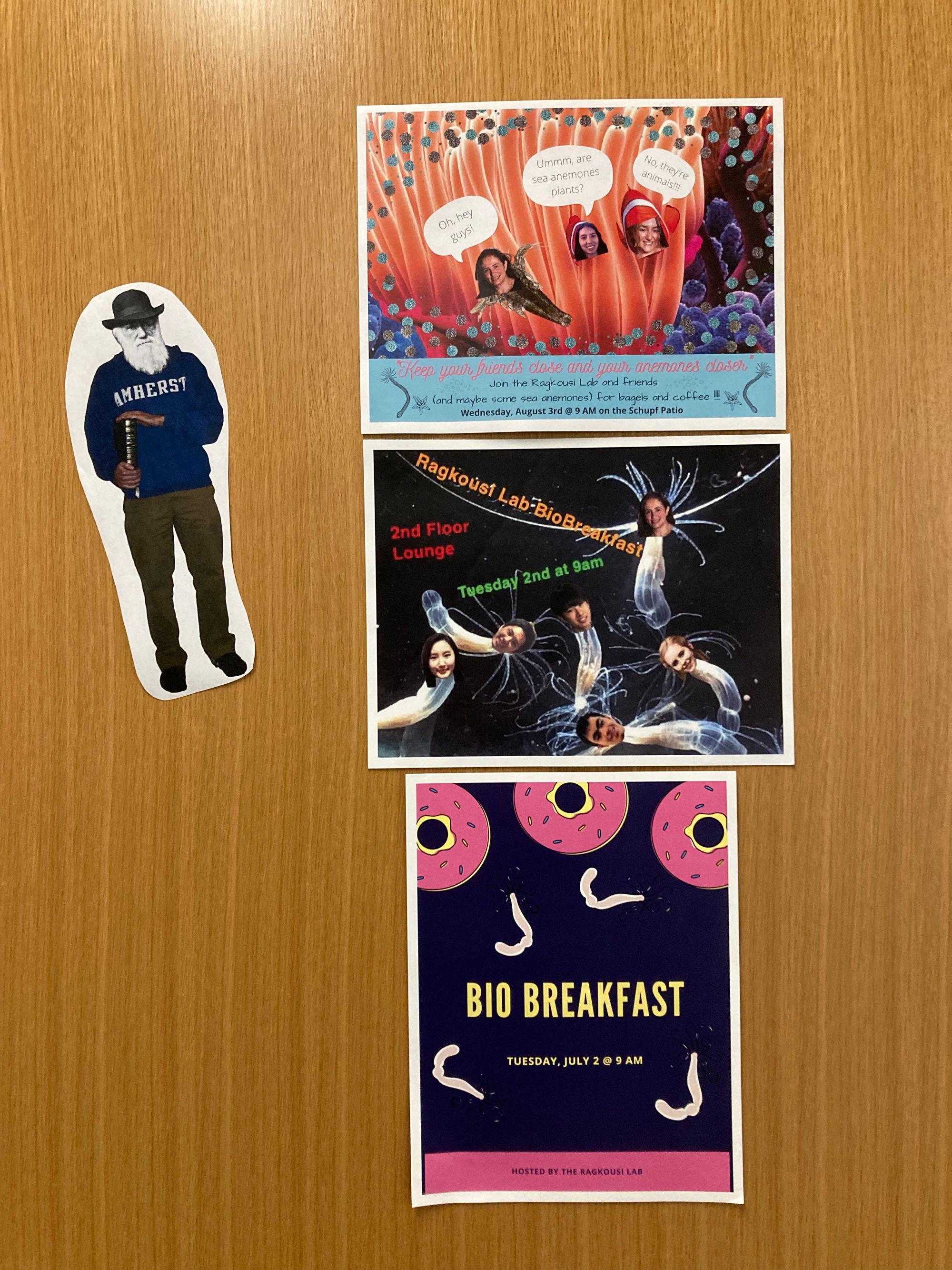
Another unique part of Ragkousi’s door is a huge image of a chicken embryo with a quote from developmental biologist Viktor Hamburger: “Our real teacher has been and still is the embryo, who is, incidentally, the only teacher who is always right.”
Ragkousi loves this quote because it tells us what scientists should and should not do. “When you are in science, sometimes you are eager to form your own hypothesis and your own explanations,” she explained. “But … you have the opportunity to let the experiment teach you. That’s exactly what [Hamburger is] saying: that you have to look at your data, you look at the animal, you look at the embryo and that is telling you what is happening instead of you imagining.”
An office door has an interesting duality. Professors decorate their office doors primarily for themselves, using what they love and cherish: memories from graduate school, pictures of their hometown, images related to their scholarly research. However, professors also decorate their office doors for their students — to signal to the students that their offices are warm and welcoming places.
All of the professors I interviewed for this article emphasized that students should always feel free to knock on their office doors. Paul summarized what she had to say in one Romanian word: Haide [Hah-ee-deh], which means both “Come on over” and “Let’s go.” She added, “I want students to know that they're always welcome to stop by my office, and that I’m there to support them in any way I can. I’m their number one fan.”



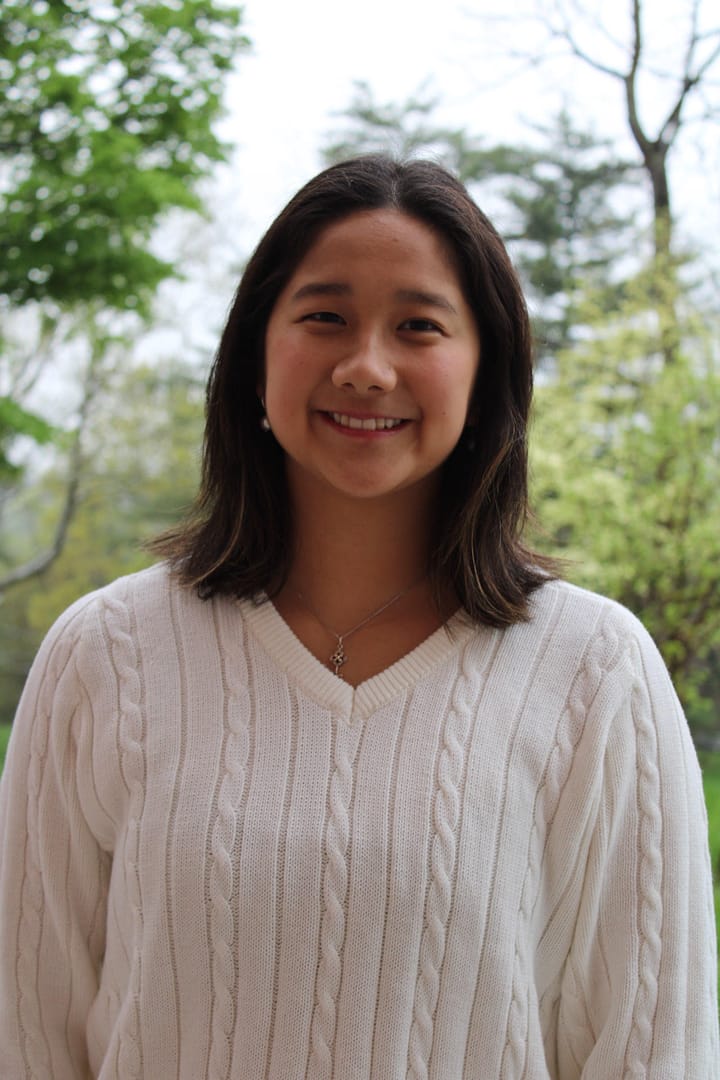

Comments ()